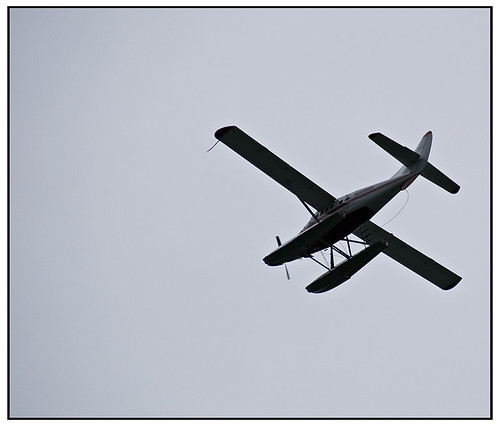
Gas At Last - Ketchikan, Alaska
Yet one more reason to move to Alaska. Actually, I'm serious: everyone dies sometime, why not in a fiery airplane crash?
A few gravel streets wind through Kake, a Southeast Alaska coastal village of 536 people, and connect to miles of logging roads. Twice a week, marine ferries provide service to other rural communities, but the only fast way in or out of Kake is by small plane. The same is true for most Alaska communities.
The state covers 656,425 square miles, but has only about 14,368 miles of road. As every real estate appraiser, oil company executive, itinerant minister and F.B.I. agent who flies on business to remote parts of the state knows, that leaves one option: bush pilots.
[From The Last Frontier of Flying - New York Times]

Helicopter landing, Juneau Alaska
Last year, Alaska had more fatalities in aircraft travel than in 2006, according to the N.T.S.B. There were 104 aircraft accidents in Alaska in 2007 and 30 deaths. In 2006, there were 24 fatalities.
Most people who fly frequently on small planes understand the hazards. Chris Rose, executive director of the Renewable Energy Alaska Project, a nonprofit with offices in Anchorage, said he often traveled to remote communities to meet with local business and municipal officials to discuss solar, geothermal and tidal power. His initial sense of adventure quickly dissipated. “Many of these villages have no lights, no control tower, no people guiding you in,” he said.
But data from the National Institute for Occupational Safety and Health showed that pilots in the state died at a rate nearly 100 times the mortality rate for all American workers, and over five times the rate for pilots nationwide. In 2005, the institute completed a four-year study to figure out why the fatality rate was so high. Its study found that in many cases, pilots of small planes lacked enough time to rest between flights. It also identified a possible link between lack of experience and fatal accidents.
Dr. George Conway, Alaska field station chief of the institute, who led the study, said that it had become safer to fly in the state in recent years. The study coincided with an F.A.A. effort to upgrade avionics equipment in planes and on the ground. It also installed 82 Web cameras on coasts, in mountain passes and other places to give pilots a better understanding of actual conditions (http://akweathercams.faa.gov) and plans 139 more. The Medallion Foundation introduced a safety training and rating program, now in its sixth year.
Aircraft operators receive stars for their level of training. Dr. Conway says the institute has also worked to educate fliers about plane safety. “We’ve encouraged them not to pressure pilots to fly into bad weather,” he said.

Sea Plane, Juneau, Alaska
You can research your pilots at the FAA, the Medallion Foundation, or the NTSB. What more could you want?
